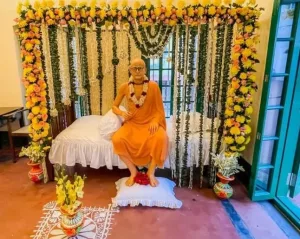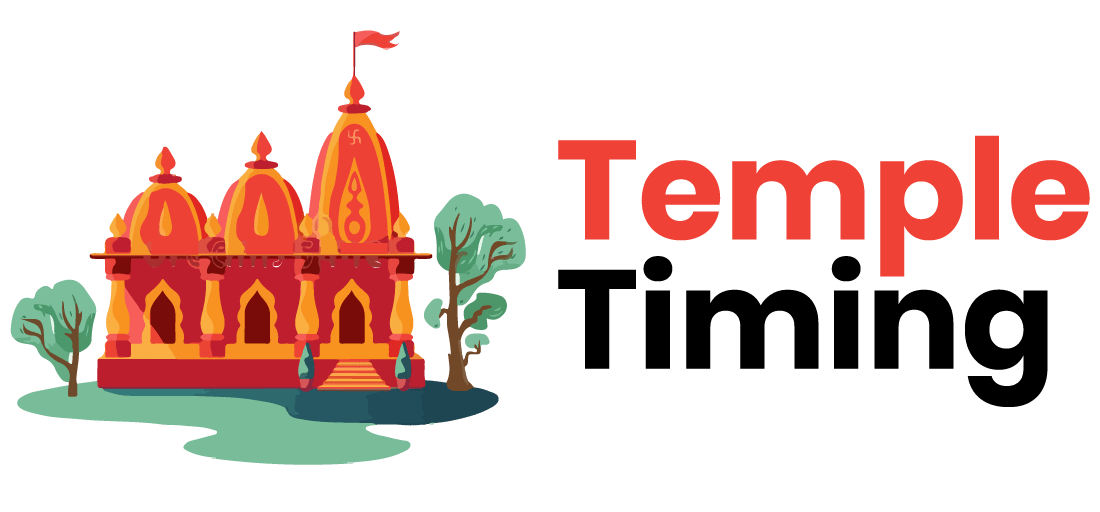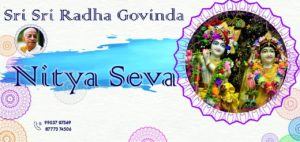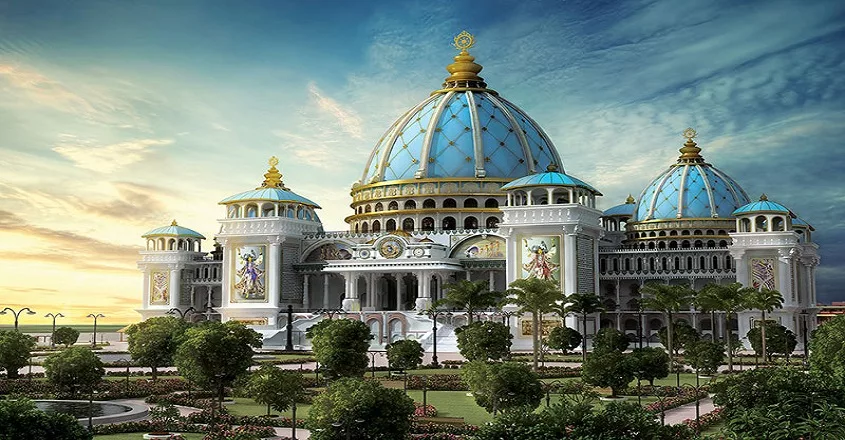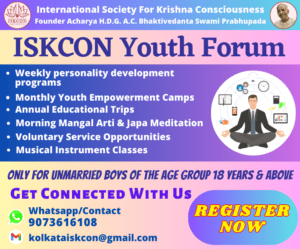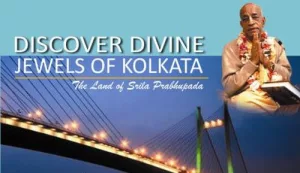First before proving the existence of a personality we first should have a basic knowledge about him ,knowledge which neither the belivers nor the non-belivers deny
Who is Lord Krishna ?
Sri Krishna is the Supreme Personality of Godhead and is worshipped along with His consort Srimati Radharani. People say that Krishna is the eighth avatara of Lord Vishnu. But Brahma Samhita, a prayer composed by Lord Brahma, mentions that Krishna is the original purusha and He is the source of Lord Maha Vishnu. This is also confirmed in Srimad Bhagavatam. He appeared as the son of Devaki and Vasudeva and performed various pastimes along with His brother Balarama.
Science has time and again questioned the existence of God so what to talk about special personalities like Lord Krishna whose activities and pastimes are yet unexplained to people who worship him still as he is said to be the one who answer all questions irrespective of the way the person wants to understand him be it devotedly or just logically
So now as we know that who is Krishna now let look into the ways so as to how can we prove his existence’
1.Archeological evidence
2.Carbon dating proofs
3.Astronomical evidence
4.Through cultural practices .
5.Literary resources .
1.Archeological evidence
“The sea, which had been beating against the shores, suddenly broke the boundary that was imposed on it by nature. The sea rushed into the city. It coursed through the streets of the beautiful city. The sea covered up everything in the city. Arjuna saw the beautiful buildings becoming submerged one by one. He took a last look at the mansion of Krishna. In a matter of a few moments it was all over. The sea had now become as placid as a lake. There was no trace of the beautiful city which had been the favourite haunt of all the Pandavas. Dwarka was just a name; just a memory.” – Mausala Parva, Mahabharata.
Does this account from the ancient Indian epic have a true historical core? Did Lord Krishna, the youthful, playful God, indeed the favourite Indian deity, walk the streets of ancient Dwarka? Did Krishna, considered the Lord of the universe by a billion Hindus, rule the Yaduvanshi clan thousands of years ago?
The reason why some doubt Krishna’s existence at all is because of the web of lies spun by European Indologists who first appeared on the scene in the 19th century. These scholars, some of who had never set foot in India and did not even bother to study Sanskrit, questioned every belief the Hindus had held for millennia. They concluded – and their traitorous Indian followers faithfully accepted – that Krishna was a myth.
There are two reasons why the Europeans, mostly British, debunked Indian history. One, these Indologists were not Indophiles; they did not come to seek the truth. They were in fact racists and imperialists, convinced of the need to invade India and create a class of people willing to serve the British loyally. So the British wanted to destroy everything Indians took pride in.
Two, these so-called scholars were also fired by the zeal of spreading Christianity. When the Europeans first came into contact with learned Indians and their historical texts, they were shocked to learn that Indian history pre-dated their world by thousands of years. It clashed with their religious belief that (their) God had created the earth 4000 years ago! For the missionaries, destroying the historicity of Krishna was imperative if they had any chance of establishing their religion in India. By labelling as myth the Indian historical sources like the Vedas, Mahabharata, Upanishads, and especially the Puranas, which give exact chronologies of Indian kings including Krishna, the missionaries ensured that Indian history and tradition facilitated the process of colonising the Indian mind.
However, the truth is always difficult to suppress. Using archaeological, scriptural, literary and astronomical data, scholars and scientists are coming round to the view that Krishna was definitely a historical character.
Archaeological Evidence
The Rosetta stone, or the key, to the Krishna story is Dwarka. The strongest archaeological support comes from the structures discovered in the late 1980’s under the seabed off the coast of modern Dwarka in Gujarat by a team of archaeologists and divers led by Dr S.R. Rao. An emeritus scientist at the marine archaeology unit of the National Institute of Oceanography, Goa, Rao has excavated a large number of Harappan sites, including the port city of Lothal in Gujarat.
In his book The Lost City of Dwarka, published in 1999, he writes about his undersea finds: “The discovery is an important landmark in the history of India. It has set to rest the doubts expressed by historians about the historicity of Mahabharata and the very existence of Dwarka city.”
Conducting 12 expeditions during 1983-1990, Rao identified two underwater settlements, one near the present-day Dwarka and the other in the nearby island of Bet Dwarka. This tallies with the two Dwarkas mentioned in the epic. The underwater expeditions won Rao the first World Ship Trust Award for Individual Achievement.
Another important find by our divers was a seal that establishes the submerged township’s connection with the Dwarka of the Mahabharata. The seal corroborates the reference made in the ancient text, the Harivamsa, that every citizen of Dwarka should carry such a seal for identification purposes. Krishna had ruled that none without the seal should enter it. A similar seal has been found onshore as well.
In his book, Search for the Historical Krishna, N.S. Rajaram, a mathematician and former NASA scientist, writes that names of people and places contemporaneous to Krishna are found on some Harappan seals. For example, words like Paila (Ved Vyasa’s pupil), Akrura (Krishna’s friend), Vrishni (Krishna’s clan), Yadu (Krishna’s ancestor), Sritirtha (old name for Dwaraka) are found on seals, some of which go back 5000 years.
2.Carbon dating proofs
There is talk of a banyan tree which the documentary says was a witness to the Battle of Kurukshetra, where 4 million people are said to have died in 14 days. Where exactly does this exist? Has the tree been carbon-dated to confirm its age? There is indeed a banyan tree at Jyotisaar in Kurukshetra which is worshipped as such. This concept is similar to the tree in Jerusalem, which is thought to have witnessed Jesus’s arrival. Carbon-dating of this banyan tree is unlikely to give any concrete answers. I have included it in the documentary to show the living tradition of India — like worship of the Ganges cannot be carbon-dated to give any answers. There is a gentleman named Ram Prasad Birbal, who said he has found many bones which are said to belong to the Kurukshetra battle. Has this been scientifically proved? Ram Prasad Birbal is a resident of Kurukshetra. I am not aware of carbon dating of those bones. But I am informed that thermo-luminescent dating of other relics as well as carbon-dating at other sites in Kurukshetra have given dates far older than the Indus valley civilisation. Further, Euan Mackie, an eminent archaeologist, had found a clay tablet of Krishna’s Yamalaarjuna episode at Mohenjedaro, a site of the Indus Valley civilisation proving that even in 2200 BC, there was a culture of worshipping Krishna
3.Astronomical evidence
What’s the link between the two comets that Sage Vyasa talked about, the retrograde motion of Mars (Mangal or Kuja) at Antares (Jyestha) to all this The idea that comets are harbingers of doom is welldocumented. The thing is that there is a set of statements describing comets and their positions. Only Dr Achar has arrived at the correct deduction, that those sentences in Bhisma Parvan relate to comets, not planets — which is where previous researchers found it difficult. We know that Halley’s comet was seen in that year as well. *Halley’s and other such skywatchers actually used Vedic texts to re-discover comets. Dr Achar interpreted verses from the Bhism Parvan and Udyog Parvan to arrive at various conclusions. One of them is that when Saturn in at Aldebaran (Rohini) it brings great bad tidings. The last time this happened was in September 2001, when 9/11 happened. When does this happen next? Actually Saturn at Rohini is long known to be a bad omen by astrologers.Rohinim Pidyannesha Stitho Rajan Shanischarah. This transit happened in 1971 where a million or so were killed, and again in 2001 September, when 9/11 happened. The next time is in 2030/2031 AD approximately. When is the next time Mars will be in Antares? Mars at Jyestha has to be taken in conjunction with the other things mentioned by Karna when he talks to Krishna, as it occurs every year. In any case, those people were great astronomers and not just warriors, so we don’t know what the extent of their knowledge was regarding these events, In my personal humble opinion it was perhaps even better than that which we have today.
4. Literary Sources
The west coast of Gujarat was the traditional land of the Yadavs, or Yadus. According to the Bhagavad Puran, Krishna led the Yadavs thousands of kilometres west to establish Dwarka, so they could start a new life, safe from their many enemies in the Gangetic Valley.
The Mahabharata says, Dwarka was reclaimed from the sea. Rao’s divers discovered that the submerged city’s walls were erected on a foundation of boulders, suggesting that land indeed was reclaimed from the sea.
Of course, there are thousands of references to Krishna in other Hindu as well as Buddhist texts but Dwarka is the key. For, one cannot separate Dwarka from Krishna. If the city existed, then it is true that Krishna ruled over it.
5 Cultural Practices
According to tradition and cultural practices we come to know that Krishna belonged to the Yadava – a pastoral race – Krishna was born into the Yadava family, his earthly father being Vasudeva. Unfortunately for Krishna his maternal uncle, Kamsa, had been warned that Devaki’s eighth child would kill him, and so Kamsa determined to murder the eighth child, a crime he had already carried out seven times before Krishna was born. Fortunately, Vasudeva took the precaution of hiding Krishna in the remote village of Vrindavana where the boy was brought up as a simple cowherd (in this guise he can be referred to as Govinda). There he spent an idyllic childhood and stirred the hearts of many gopis or herd-women with his dark good looks, playful charm, and mastery of music and dance.
Thus the story of Krishna contains a double concealment – Krishna is both a god disguised as a mortal and a prince disguised as a commoner. Accordingly, the myths contain many metaphors of disguise, such as a spark within a pile of ashes or a mighty sword in its scabbard, and these hint at Krishna’s dual purpose as the punisher of human deeds but also as a bringer of enlightenment.
Krishna’s foster parents at Vrindavana were Nanda and Yashoda, his sister is Subhadra, and his brother Balarama. Krishna’s favourite wife was Radha, with whom he had a son Pradyumna and daughter Carumati, but tradition has it that the god actually acquired 16,108 wives and fathered 180,000 sons. Queen Rukmini, an earthly form of the goddess Lakshmi, is considered Krishna’s second most favoured wife after Radha.
Krishna was involved in many escapades in his adventurous youth. Notable amongst these are his various killings and thrashings of prominent enemies such as the ogress Putana, the giant bull danava, the giant snake Kaliya, and the king of the Hayas (horses). Also swiftly dealt with was the scheming tyrant Kamsa – after whose beheading Krishna established himself as king of Mathura. Krishna slew many demons: Muru and his 7,000 sons, Pralamba – who Krishna beat up using only his fists, Naraka – son of the Earth and who had accumulated a harem of 16,000 captured women, and the sea-demon Pancajana who looked like a conch shell and who lost his magic shell to Krishna which the hero carried thereafter and used as a trumpet. Krishna also found time to lift the mountain Govardhana to foil a terrible deluge sent by Indra, to conquer Saubha, the floating city of the Titans (daityas), got the better of the sea-god Varuna, and even managed to steal the divine discuss possessed by the fire-god Agni. Against mere mortals Krishna also wreaked havoc amongst the Gandharas, Bhojas, and Kalingas, amongst others


